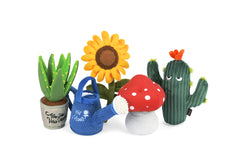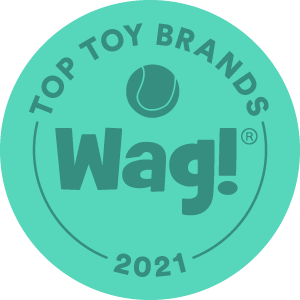Teaching children how to interact appropriately with dogs is an essential part of responsible pet ownership. This not only helps to build a strong bond between your child and dog but also helps grow their confidence and familiarity with each other. Proper guidance and patience are always necessary when instructing children on how to play with dogs.
With the rising rates of pet ownership, it’s more than likely that your children will eventually interact with other pets. Teaching your children to become responsible pet owners can help ensure that they have a harmonious relationship with both your dogs and any other dogs they come across.
Educate your child about dog behaviour and body language
Before introducing your child to a dog, it's essential to teach them about the animal's behaviour and body language. Familiarise your child with signs of fear, aggression, and playfulness in dogs. Some examples include:
- A wagging tail: It can signify happiness, but if the wag is stiff or fast, it could indicate agitation or fear.
- Growling: This is a sign of aggression or fear, and the child should back off.
- Exposing the belly: A sign that the dog is relaxed and comfortable.
By understanding these cues, children can better interact with dogs, respond appropriately to their signals, and encourage more positive interactions.
Set ground rules for interacting with dogs
Establishing clear rules for children when interacting with dogs is crucial for their safety and the dog's well-being. Some essential ground rules include:
- Always asking permission from the dog's owner before approaching or petting the dog.
- Avoiding sudden movements or loud noises that could startle the dog.
- Not pulling on the dog's ears, tail, or fur.
- Not disturbing a dog when it's eating, sleeping, or caring for puppies.
Teach your child to follow these guidelines consistently – while some dogs may be more tolerant than others, they may still become fed up with being bothered!
Supervise interactions between children and dogs
Always supervise interactions between your child and a dog, regardless of the dog's breed or size. This allows you to intervene if the situation becomes dangerous or if the child or dog becomes overwhelmed. Gradually, as both the child and the dog become more comfortable with each other, you can lessen the level of supervision.
Teach your child to respect the dog's personal space
Encourage your child to give the dog space and avoid crowding it. Teach them to approach the dog calmly and slowly, extending a hand for the dog to sniff before petting it gently. This helps the dog feel comfortable and builds trust between the child and the pet.
Introduce games that promote positive interactions
Teach your child to engage in games that foster positive interactions and help establish a strong bond between them and the dog. Some appropriate games include:
- Fetch: Teach your child to throw a ball or toy for the dog to retrieve, ensuring that they give the dog space to run and avoid snatching the object away from the dog.
- Hide and seek: Instruct your child to hide treats or toys around the house or yard for the dog to find, encouraging the dog's natural instincts to search and explore.
- Obedience games: Teach your child basic dog commands such as "sit," "stay," and "come," allowing them to practise and reward the dog with treats for successful completion.
Encourage empathy and understanding
Help your child develop empathy for the dog by discussing its needs, emotions, and experiences. Explain that dogs have feelings too and need care, love, and understanding, just like humans. Encouraging empathy will help your child develop a deeper connection with the dog and understand the importance of treating it with kindness and respect.
Teach responsibility through pet care
Involve your child in the daily care of the dog, such as feeding, grooming, and exercising. By assigning age-appropriate tasks, children learn responsibility and the importance of taking care of another living being.
Some examples of tasks include:
- Feeding: Teach your child the proper amount and type of food to give the dog and establish a feeding schedule.
- Grooming: Show your child how to brush the dog's fur, clean its ears, and trim its nails safely and gently.
- Walking: Teach your child how to walk the dog using a leash, always maintaining control and cleaning up after the pet.
Demonstrate appropriate behaviour
Children learn best by example, so it's crucial for parents to model appropriate behaviour when interacting with dogs. Show your child how to treat the dog with respect and kindness by petting gently, speaking softly, and giving the dog space when needed. By setting a good example, you encourage your child to follow suit and develop a healthy relationship with the dog.
Encourage communication and trust
Foster open communication between your child and the dog by teaching your child to read the dog's body language and vocalisations. Encourage your child to express their feelings and concerns about the dog, and address any issues that may arise.
By promoting communication and trust, you create a strong foundation for a lasting bond between your child and the dog.
Monitor progress and provide feedback
Regularly assess your child's progress in interacting with the dog and offer constructive feedback to help them improve. Praise their successes and address any areas that need improvement.
Encourage your child to ask questions and seek guidance when needed. This ongoing support helps your child develop confidence in their abilities as a responsible pet owner.
Conclusion
Teaching children to play nicely with dogs is a vital aspect of responsible pet ownership. It contributes to the safety and well-being of both the child and the dog and fosters a strong, loving bond between them.
While it can take some patience to get your children on-board, the lessons they learn can stay with them throughout their entire lives.
About the Author:
David Baquiran is a former teacher and record label executive who now spends his days running after his two dogs, all the while pursuing a freelance writing career. When he isn’t writing, you can find him learning more about the ethical breeding and raising of pets.







